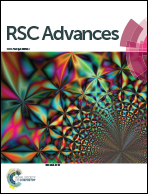Improved bioreduction of nitrobenzene by black carbon/biochar derived from crop residues†
Abstract
Black carbon (BC) and biochar were produced from wheat straw and cotton stalk through open-field combustion and oxygen-limited pyrolysis, respectively. Different BC/biochar samples were characterized for their morphology, elemental composition, electrical conductivity, surface area and functional groups, etc., and assayed for their stimulating effects on microbial reduction of nitrobenzene by Shewanella oneidensis MR-1. Here, the preparation method was found to have significant effects on the physicochemical properties and stimulating capacities of BC/biochar samples, whereas the feedstock biomass did not demonstrate an obvious impact on these properties as anticipated. Better stimulation of bioreduction of nitrobenzene (10 to 400 mg L−1) was normally observed with BC samples, which have more oxygenated groups than their biochar counterparts. The stimulating effects generally increased with the increase of BC/biochar dosage. And biochar obtained at higher pyrolysis temperatures generally showed better stimulating performance. Moreover, the addition of BC/biochar samples together with anthraquinone-2,6-disulfonate, which is a typical soluble quinone redox mediator, into bioreduction systems resulted in better stimulating effects than the use of quinone alone. BC/biochar prepared from crop residues therefore may be exploited as a low-cost redox mediator to stimulate nitroaromatic bioreduction.


 Please wait while we load your content...
Please wait while we load your content...